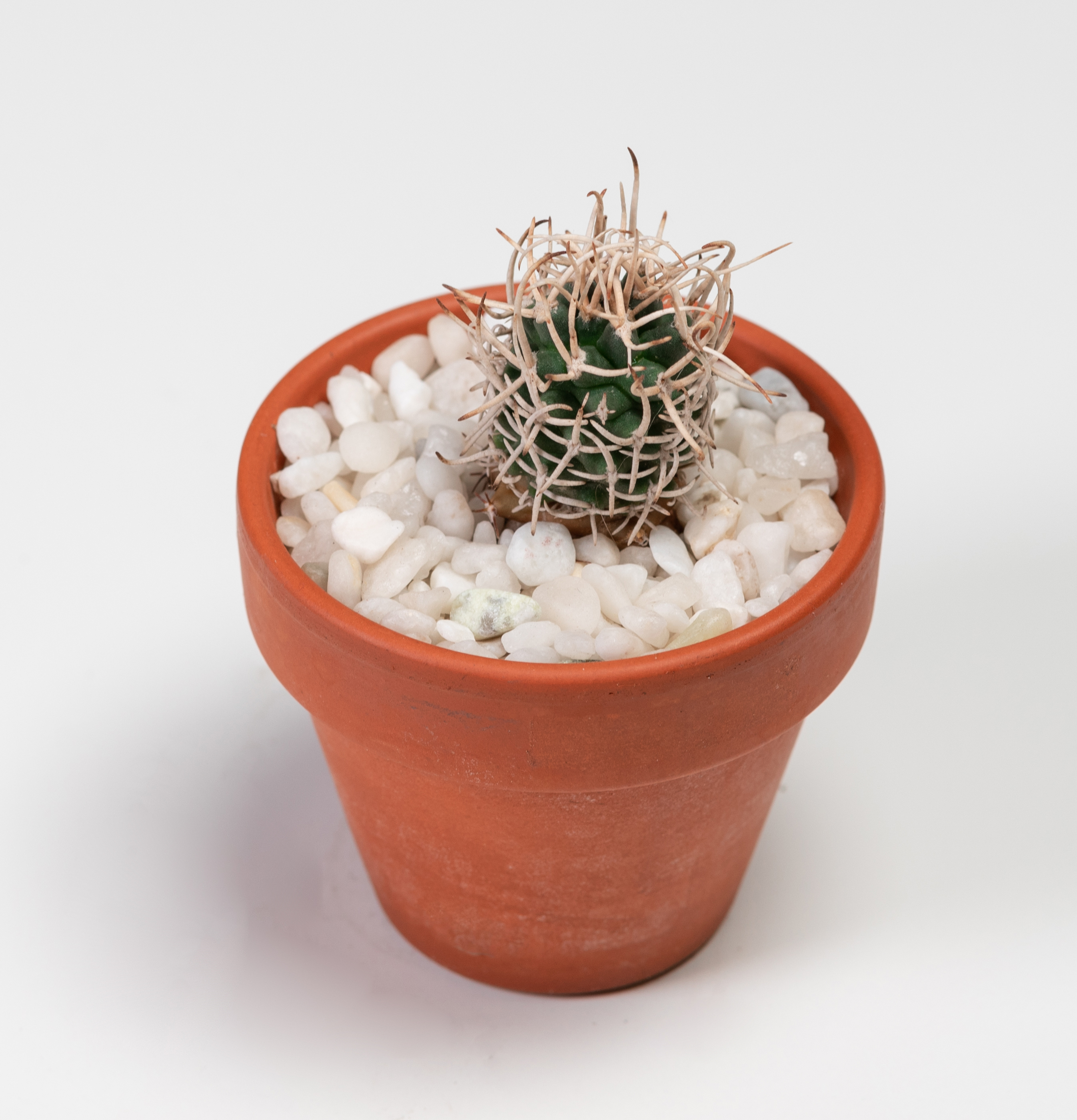Navajo pincushion cactus
(Pediocactus peeblesianus)

Description
Pediocactus peeblesianus is a rare species of cactus known by the common names Navajo pincushion cactus. It is endemic to the state of Arizona in the United States. One subspecies of the plant is federally listed as an endangered species of the U.S. This petite cactus grows up to 6.5 centimeters tall by about 5.5 wide. It is grayish green in color and generally spherical or egg-shaped. Sometimes only the top is visible above the soil and the whole cactus body may shrink and disappear under the soil in dry times. Each circular, hairy areole on the surface of the cactus has a few spines, the longest of which may exceed 2 centimeters in length. The spines are mostly corky and flexible but have hard tips and are white or dull in color. The yellowish flowers are up to 2.5 centimeters wide. The fruit is green, ripening reddish, and reaches about a centimeter long. The species occurs in desert habitat and the transition to Great Basin grassland habitat. It grows in sandy soil and among rocks. This species is divided into two subspecies, but these are sometimes referred to as varieties. The rarer, ssp. peeblesianus, the Peebles Navajo cactus, is a rare and endangered taxon which is limited to a small strip of desert in Navajo County, Arizona, near Joseph City and Holbrook. Drought has been a significant threat to this cactus in recent years. The Peebles Navajo cactus has a mycorrhizal association with Glomus deserticola and other fungi. The species is named after the Arizona botanist Robert Hibbs Peebles.
Taxonomic tree:







